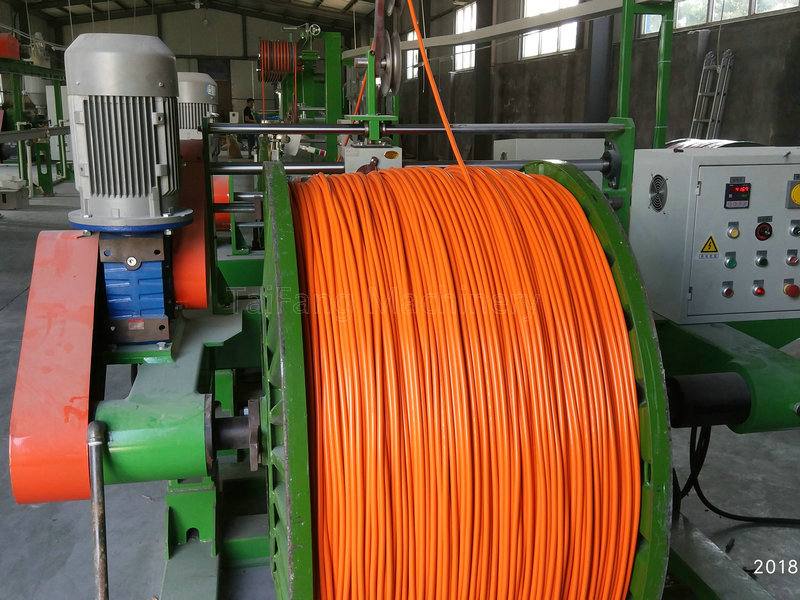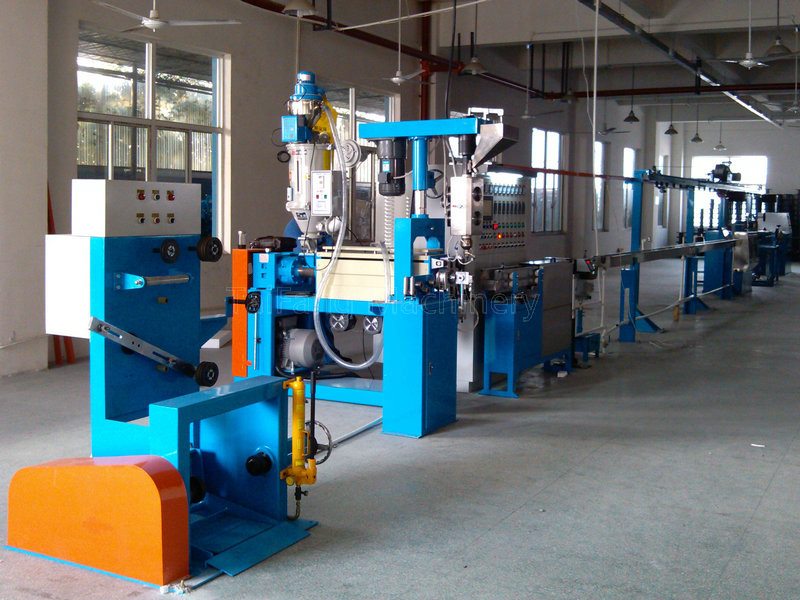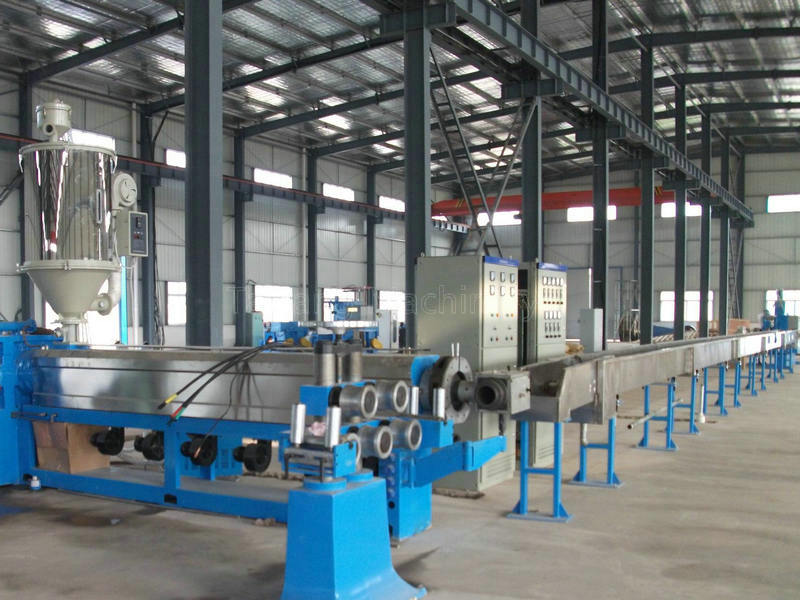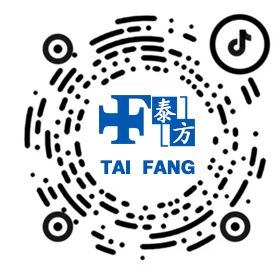
微信二維碼,掃一掃,聯(lián)系我們
泰方電線機(jī)械有限公司
聯(lián)系人:鐘先生
手機(jī):13652583376
E-mail:[email protected]
地址:廣東省東莞市厚街鎮(zhèn)溪頭工業(yè)區(qū)
押出機(jī)英文
發(fā)布時(shí)間:2025-02-27 08:39:40 人氣:72
TheUltimateGuideto Understanding Extruders in English
In the world of manufacturing and material processing, extruders play a pivotal role. Whether you’re in the plastics industry, food production, or even pharmaceuticals, understanding the extruder machine and its functions is crucial. This guide will walk you through everything you need to know about extruders in English, from their basic operation to their diverse applications.
What is an Extruder?
An extruder is a device used to create objects of a fixed cross-sectional profile by pushing material through a die of the desired shape. The process, known as extrusion, is widely used in various industries due to its efficiency and versatility. The material, often in the form of pellets, granules, or powder, is heated and forced through the die, resulting in a continuous product that can be cut to length.
Key Components of an Extruder
- Hopper: This is where the raw material is loaded. It feeds the material into the barrel.
- Barrel: The barrel houses the screw, which is responsible for moving and heating the material.
- Screw: The screw is the heart of the extruder. It rotates to mix, compress, and melt the material.
- Heaters: These are used to heat the barrel and ensure the material reaches the desired temperature.
- Die: The die shapes the material into the desired profile as it exits the extruder.
Types of Extruders
Extruders come in various types, each suited for specific materials and applications. Here are the most common ones:
1. Single-Screw Extruder
The single-screw extruder is the most basic type, featuring one screw within the barrel. It is widely used due to its simplicity and cost-effectiveness. However, it may not be suitable for materials that require high mixing efficiency.
2. Twin-Screw Extruder
The twin-screw extruder has two screws that rotate either in the same direction (co-rotating) or opposite directions (counter-rotating). This type offers better mixing and is ideal for complex materials, such as those used in the food and pharmaceutical industries.

3. Ram Extruder
Unlike screw extruders, the ram extruder uses a piston to push the material through the die. It is often used for materials that are difficult to process with screw extruders, such as certain types of rubber and ceramics.
4. Cold Extruder
The cold extruder operates at or near room temperature, making it suitable for materials that degrade at high temperatures. This type is commonly used in the metalworking industry.
Applications of Extruders
Extruders are used in a wide range of industries, each leveraging the machine’s capabilities to meet specific needs.
1. Plastics Industry
In the plastics industry, extruders are used to produce items such as pipes, tubes, sheets, and films. The process allows for high-volume production with consistent quality.
2. Food Industry
In food production, extruders are used to create products like pasta, breakfast cereals, and snacks. The process can also be used to cook, shape, and texture food products in a single step.
3. Pharmaceutical Industry
Extruders are used in the pharmaceutical industry to produce drug delivery systems, such as tablets and capsules. The process ensures precise dosing and uniform quality.
4. Rubber Industry
In the rubber industry, extruders are used to manufacture products like tires, hoses, and seals. The process allows for the creation of complex shapes and profiles.
Advantages of Using Extruders
The use of extruders offers several benefits, making them a popular choice in various industries.
- High Efficiency: Extruders can produce large quantities of material in a short amount of time, making them highly efficient.
- Versatility: Extruders can process a wide range of materials, from plastics and metals to food and pharmaceuticals.
- Consistency: The extrusion process ensures uniform quality and dimensions, reducing the need for additional finishing processes.
- Cost-Effectiveness: Extruders are relatively low-cost to operate and maintain, making them a cost-effective solution for many manufacturers.
Considerations When Choosing an Extruder
When selecting an extruder, several factors should be considered to ensure it meets your specific needs.
- Material Type: Different materials require different types of extruders. For example, a twin-screw extruder may be more suitable for complex materials, while a single-screw extruder may suffice for simpler materials.
- Production Volume: The required production volume will influence the size and type of extruder you choose. High-volume production may require a larger, more robust machine.
- Product Specifications: The desired product specifications, such as shape, size, and texture, will determine the type of die and extruder needed.
- Energy Efficiency: Consider the energy consumption of the extruder, especially if you are looking to reduce operational costs.
Maintenance and Troubleshooting
Proper maintenance is essential to ensure the longevity and efficiency of your extruder. Regular cleaning, lubrication, and inspection of key components can prevent costly breakdowns.
Common Issues and Solutions
- Material Blockages: Ensure the hopper and screw are free of debris. Regularly inspect and clean these components.
- Uneven Extrusion: This could be due to inconsistent material feed or temperature fluctuations. Check the hopper feed rate and ensure the heaters are functioning correctly.
- Screw Wear: Over time, the screw may wear out, leading to reduced efficiency. Regularly inspect the screw and replace it if necessary.
Future Trends in Extrusion Technology
As technology advances, so does the field of extrusion. Automation and smart manufacturing are becoming increasingly prevalent, allowing for more precise control and monitoring of the extrusion process. Additionally, there is a growing focus on sustainability, with manufacturers seeking ways to reduce energy consumption and waste.
3D printing is another area where extrusion technology is making waves. Fused Deposition Modeling (FDM) is a type of 3D printing that uses extrusion to create objects layer by layer. This technology is being used in industries ranging from aerospace to healthcare.
Conclusion
Extruders are indispensable tools in modern manufacturing, offering efficiency, versatility, and consistency. Whether you’re producing plastic pipes or pharmaceutical tablets, understanding the extruder machine and its capabilities is essential. By considering factors such as material type, production volume, and product specifications, you can choose the right extruder for your needs and ensure smooth, efficient operation.
相關(guān)產(chǎn)品
相關(guān)新聞
- 押出機(jī)英文指南,全面了解Extrusion Machine 2025-03-02
- 押出機(jī)原理,從基礎(chǔ)到應(yīng)用的全面解析 2025-03-02
- 押出機(jī)模具,高效生產(chǎn)的秘密武器 2025-03-02
- 押出機(jī)機(jī)頭,塑料擠出工藝中的核心部件 2025-03-02
- 押出機(jī),現(xiàn)代制造業(yè)的高效生產(chǎn)利器 2025-03-02
- 探索押出機(jī)的世界,從圖片中了解其工作原理與應(yīng)用 2025-03-01
- 押出機(jī)是什么?全面解析這一高效擠出設(shè)備 2025-03-01
- 押出機(jī)頭,塑料擠出生產(chǎn)中的核心技術(shù)解析 2025-03-01
- 押出機(jī)換模操作指南,高效換模的步驟與技巧 2025-03-01
- 電線押出機(jī)工作原理,從原材料到成品的精密工藝 2025-02-28











 客服QQ
客服QQ